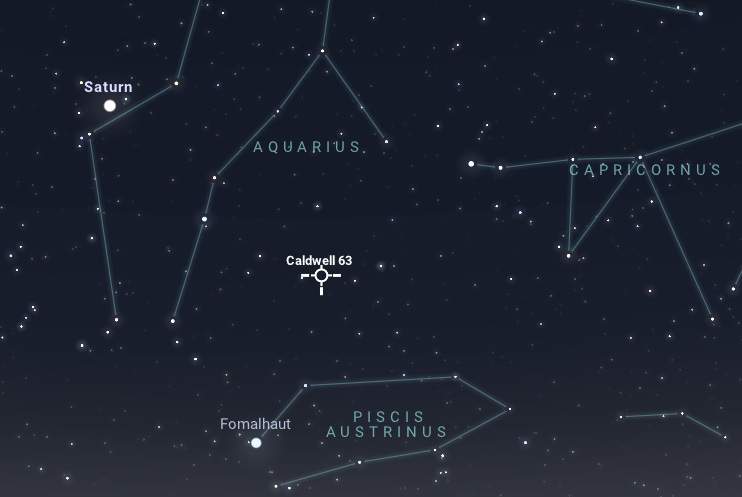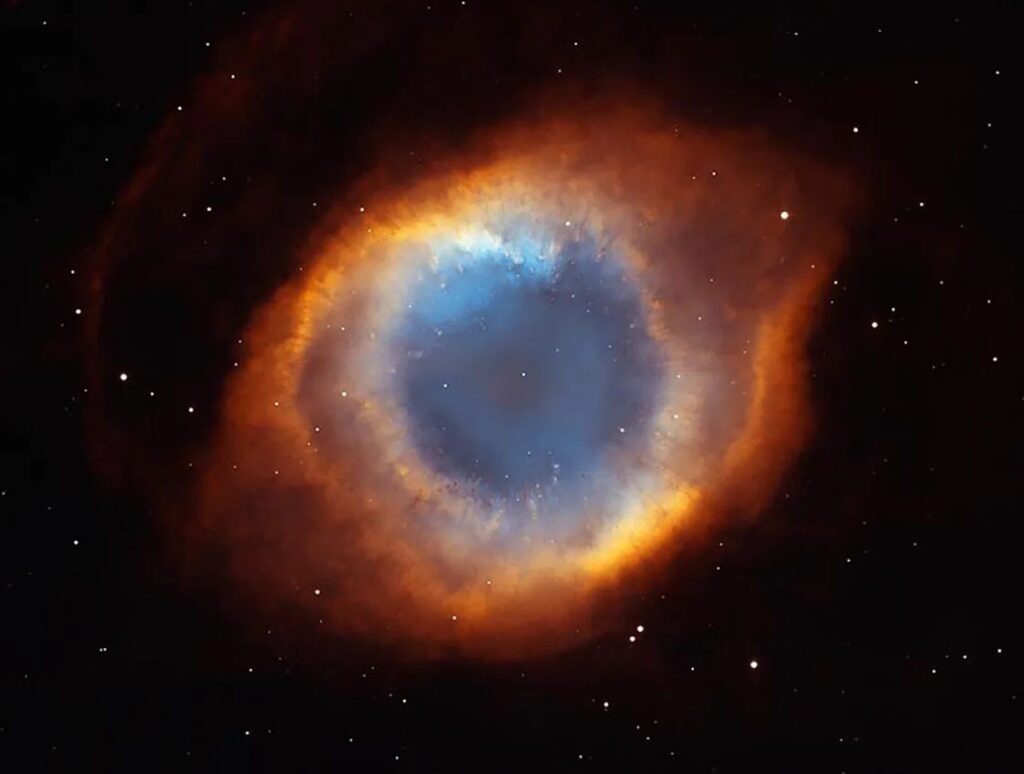The Helix Nebula, also known as NGC 7293 and Caldwell 63, is one of the most famous and extensively studied planetary nebulae. Located in the constellation Aquarius, it is approximately 650 light-years away from Earth, making it one of the closest nebulae to our planet. Below are some key details about the Helix Nebula:
Structure and Composition
The Helix Nebula, often referred to as the “Eye of God” in popular culture, features a complex structure composed of multiple layers of gas and dust ejected from its central star during its late evolutionary stages. The outer halo is a faint, extended envelope of gas and dust that was ejected during the star’s asymptotic giant branch (AGB) phase, making it less dense and more diffuse than the inner regions of the nebula. The most prominent feature is the main ring, which appears as a bright, doughnut-shaped structure. This ring is the remnant of the outer layers of the star that were expelled as it transitioned into a planetary nebula.
Closer to the central star, the nebula exhibits intricate, filamentary structures often referred to as “cometary knots.” These knots have dense heads and diffuse tails pointing away from the central star, shaped by its intense radiation. The remnant of the original star, now a white dwarf, is incredibly hot and emits strong ultraviolet radiation that ionizes the surrounding gas. This ionization causes the nebula to glow across various wavelengths. The central white dwarf has a surface temperature of approximately 120,000 Kelvin and is several thousand times more luminous than the Sun during its peak AGB phase.
Observations and Imaging
The Helix Nebula emits light across a wide range of wavelengths, with strong emission lines primarily from hydrogen (H-alpha), oxygen (O III), and nitrogen (N II). In telescopic images, the Helix Nebula appears as a multi-coloured ring, with a blue-green centre from O III emissions and reddish outer regions from H-alpha and N II emissions. NGC 7293 has been extensively observed by various ground-based telescopes and space observatories. The Hubble Space Telescope (HST) has provided high-resolution images revealing detailed structures within the nebula. The Spitzer Space Telescope conducted infrared observations that offered insights into the dust composition of the nebula, while the Chandra X-ray Observatory detected X-ray emissions from the central white dwarf and surrounding gas.
How to Observe
The Helix Nebula is located in the constellation Aquarius, which is best viewed from the Southern Hemisphere. However, it is also visible from much of the Northern Hemisphere, particularly from lower latitudes. In the Southern Hemisphere, the Helix Nebula is best observed during the spring and summer months (September to December) when Aquarius is high in the sky. Locations in Australia, New Zealand, South Africa, and southern parts of South America offer excellent views of the nebula. In the Northern Hemisphere, the best time to observe NGC 7293 is during late summer to early fall (August to October) when Aquarius is well-positioned in the night sky. The nebula is visible from mid to low northern latitudes, but observers at higher latitudes (above 50°N) may find it challenging to see due to its low position on the horizon. Regions in southern Europe, the southern United States, and areas closer to the equator will have a better chance of viewing the nebula clearly.

Observing from a location with minimal light pollution significantly enhances visibility, revealing faint details under dark skies. Although the Helix Nebula is relatively large in apparent size, it has a low surface brightness, making observation with the unaided eye impossible. Using binoculars or a small telescope with a wide field of view can aid in spotting it. To locate the nebula, look for the constellation Aquarius, which can be found between Capricornus and Pisces. The constellation is identifiable by its distinctive “water jar” asterism.



